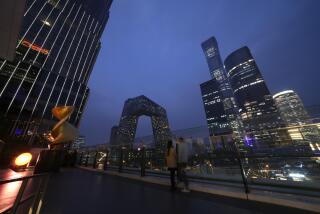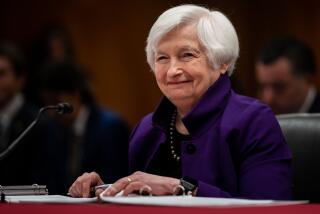Asia’s Recovery Looks More Sickly Every Day
It’s a sad thought, but the truth is that the Asian financial crisis is probably not over. And it could well get worse.
The problem dates back to the summer of 1997, when the national currency of Thailand collapsed, pulling many other Asian currencies down with it. The region reeled from corporate defaults, rising unemployment and fleeing investors. In the last year or so, there indeed has been visible improvement, and in this first quarter, Hong Kong and Malaysia were happy to announce double-digit growth. South Korea looks to be roaring back like the tiger of old. Stolidly, China’s economy has been chugging along. Yet Japan--the second-largest economy in the world and the giant of Asia--remains mired in recession. And, ominously, the very same weak-currency syndrome that was the initial symptom of the crisis has surfaced again.
South Korea, Thailand, Indonesia and the Philippines are seeing the value of their currencies fall sharply. The Hyundai Group, one of the largest Korean chaebol conglomerates and one of the world’s most troubled megacorporations, saw its founder forced to resign in the face of investor and shareholder revolt. In Indonesia, the world’s fourth most populous nation, President Abdurrahman Wahid, after a bold start last year, has hit a solid wall of business-sector resistance to financial and banking reform. The Philippines is sagging anew from debilitating cronyism, thanks mainly to the indifference and incompetence of former actor-turned-President Joseph Estrada. And in Thailand, where the crisis first poked through the surface of years of prosperity, neither the banking nor corporate structure has swallowed enough reform medicine to stave off a renewed round of currency erosion. Tellingly, the baht once again is getting battered. And that’s where it all started.
Part of the trouble undoubtedly stems from the recent rise in U.S. interest rates, which sucked oxygen out of Asia as short-term capital moved over to America for higher returns. But the very fact that these economies are again proving so vulnerable to fully anticipated shocks, such as a U.S. interest rate hike, is unnerving.
Two things must happen soon. Asian governments must push forward with their banking, corporate and transparency reforms, almost as if there were no tomorrow. This would not only help these economies to ride out the inevitable downturns and shocks of years to come but also increase contemporary confidence that the worst really is past.
Second, Washington must show more commitment to international financial reform. That’s not likely to happen. The Clinton administration’s reluctance to do this stems not from any unawareness of the Asian problem or intellectual dimness; on the contrary, the economic team of Treasury Secretary Lawrence H. Summers is well aware of what’s going on. But top administration officials fear that drawing too much attention to the fundamental flaws of various Asian economies may only make the Asian problem worse. What’s more, they have all but come to the philosophical conviction that “significant financial architectural reform,” as the mantra went these past few years, either is doomed to fail or in fact is impossible to realize. They do not oppose refocusing the mission of the much-criticized International Monetary Fund or helping create emergency pools of international liquidity that might be used to put out a hot currency fire or two. They believe, however, that overarching reform is either intellectually inconceivable or politically unachievable.
This view was expressed recently by a Federal Reserve Bank official: “Although currency crises may not be predictable,” writes senior economist Kenneth Kasa in a current Federal Reserve Bank newsletter, “what is predictable is that after each one there will be calls to reform the international financial architecture.” Kasa’s conclusion, widely shared in administration circles, is that all extant proposals to cope with the risks posed by such well-identified evils as short-term international capital flows are either based on unwarranted economic assumptions or deal with symptoms rather than causes.
Grandiose proposals, such as the call for the creation of a new World Financial Authority by Cambridge don John Eatwell and New School professor Lance Taylor in their new book, “Global Finance of Risk,” are not even remotely on the administration’s radar screen. Even if such broad schemes could be agreed on to cool the raging cross-national traffic in currency speculation and short-term borrowing, they would run up against the reality of global political organization: The world is a collection of independent-minded, sovereign nation-states, each with its own interests and perspective. By the time any proposal ran the gantlet of such national interests, says one U.S. official, “you’d probably wind up with little more than something resembling a rearrangement of deck chairs on the Titanic.”
Not only is the Asian financial crisis not over, it could morph into a new, far more devastating one.
On Monday, the Basel-based Bank for International Settlements, the worldwide central banks group, warned that volatile U.S. stock markets and a weakening U.S. dollar imperil the world economy. That may be too dire a prediction. Yet if the U.S. economy were to fall into serious recession, that would almost certainly drag Asia back to the future of the summer of 1997.
Times contributing editor Tom Plate’s column runs Wednesdays.
More to Read
Inside the business of entertainment
The Wide Shot brings you news, analysis and insights on everything from streaming wars to production — and what it all means for the future.
You may occasionally receive promotional content from the Los Angeles Times.










